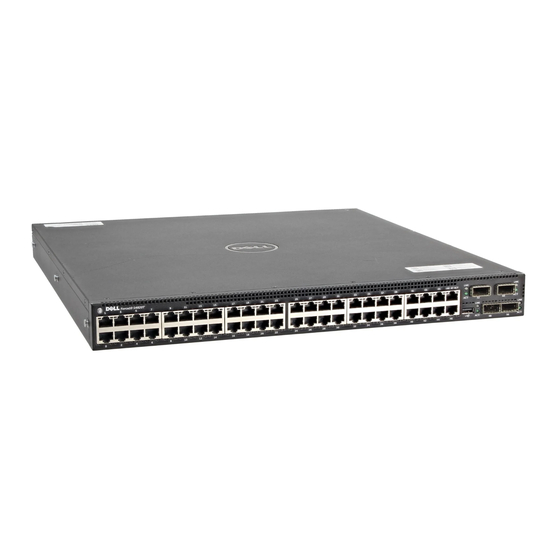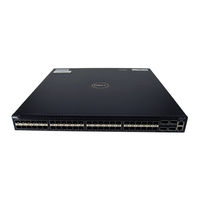
User Manuals: Dell S4820T Network Switch
Manuals and User Guides for Dell S4820T Network Switch. We have 4 Dell S4820T Network Switch manuals available for free PDF download: Configuration Manual, Manual, Installation Manual
Dell S4820T Configuration Manual (1178 pages)
Table of Contents
-
-
Audience36
-
Conventions36
-
-
-
4 Management
65 -
-
802.1Ag
95-
Ethernet CFM95
-
-
Enabling CCM103
-
-
-
802.1X
110-
-
EAP over RADIUS112
-
-
Enabling 802.1X114
-
-
-
-
IP Prefix Lists145
-
ACL Resequencing150
-
Route Maps152
-
-
How BFD Works166
-
BFD Sessions169
-
Configure BFD171
-
-
-
Route Reflectors201
-
BGP Attributes202
-
Weight204
-
Local Preference205
-
Origin206
-
AS Path207
-
Next Hop207
-
-
-
Enabling BGP216
-
-
Debugging BGP253
-
Capturing Pdus255
-
PDU Counters256
-
-
-
CAM Allocation263
-
Test CAM Usage265
-
View CAM Usage268
-
CAM Optimization269
-
-
-
-
16 Fcoe Transit
360 -
-
-
Ring Status382
-
-
-
-
Hitless Behavior404
-
Graceful Restart404
Advertisement
Dell S4820T Configuration Manual (1128 pages)
Table of Contents
-
-
Audience36
-
Conventions36
-
-
-
4 Management
62 -
-
802.1Ag
86-
Ethernet CFM86
-
-
802.1X
100-
-
EAP over RADIUS102
-
-
Enabling 802.1X103
-
-
-
-
IP Prefix Lists135
-
ACL Resequencing139
-
Route Maps141
-
-
How BFD Works154
-
BFD Sessions157
-
Configure BFD159
-
-
-
Route Reflectors187
-
BGP Attributes188
-
Origin193
-
AS Path194
-
Next Hop194
-
-
-
Enabling BGP202
-
Debugging BGP238
-
Capturing Pdus240
-
PDU Counters241
-
-
-
CAM Allocation248
-
Test CAM Usage250
-
View CAM Usage253
-
CAM Optimization253
-
-
-
-
Dcbx Operation284
-
Dcbx Port Roles284
-
Dcbx Example289
-
Configuring Dcbx290
-
-
-
16 Fcoe Transit
341 -
-
-
Ring Status362
-
-
-
-
Hitless Behavior383
-
Graceful Restart384
Advertisement
Advertisement



